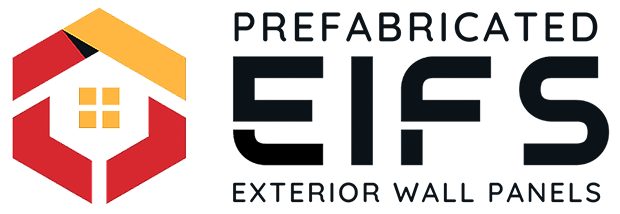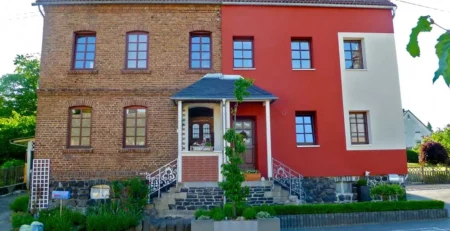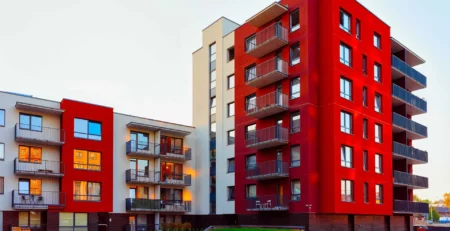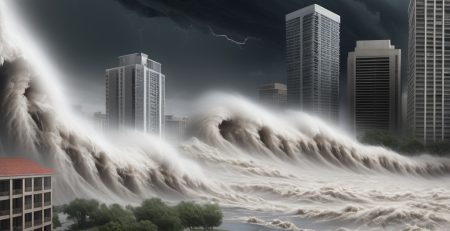EIFS vs. Other Cladding Options: A Comparative Guide for Modern Construction
When it comes to exterior building finishes, choosing the right cladding option is a critical decision for builders, architects, and property owners. Among the numerous choices, Exterior Insulation and Finish System (EIFS) stands out for its superior energy efficiency and versatility. However, other popular cladding options like brick, stucco, vinyl siding, and metal panels offer their own set of advantages. This article compares EIFS with alternative cladding systems, exploring their strengths, weaknesses, and suitability for various types of construction projects.
For developers in Canada, ModulTech is a trusted provider of high-quality EIFS solutions, offering systems that meet the demands of modern, energy-efficient building designs.
1. EIFS (Exterior Insulation and Finish System)
EIFS is a multi-layered cladding system that provides both insulation and weather protection in one integrated solution. It consists of layers including an insulation board, a base coat, and a finish coat, providing superior thermal efficiency and flexibility in design.
Advantages:
- Energy Efficiency: EIFS is well-known for its excellent thermal insulation properties, which reduce heating and cooling costs. By minimizing energy loss, EIFS can contribute to the building’s overall sustainability.
- Design Flexibility: EIFS offers a wide range of aesthetic options, including various colors, textures, and finishes, making it adaptable to both modern and traditional designs.
- Moisture Management: Modern EIFS systems are equipped with advanced moisture management features that prevent water penetration, protecting the building envelope from damage.
Challenges:
- Initial Cost: While EIFS can save money on energy bills in the long run, its upfront installation costs can be higher than some alternatives.
- Maintenance: Like any exterior finish, EIFS requires proper maintenance and inspection to ensure long-term performance.
2. Brick Cladding
Brick is one of the most traditional and durable cladding materials available. It offers a timeless aesthetic and is often associated with high-quality construction.
Advantages:
- Durability: Brick is highly durable and resistant to fire, weather, and physical damage. It can last for decades with minimal maintenance.
- Low Maintenance: Once installed, brick requires little upkeep and is less prone to fading or damage than some other cladding materials.
- Soundproofing: Brick cladding provides excellent sound insulation, making it ideal for urban settings or areas with high noise levels.
Challenges:
- Cost: Brick is one of the more expensive cladding materials, both in terms of material and labor.
- Limited Insulation: While brick is durable, it offers little in terms of thermal insulation compared to systems like EIFS.
3. Stucco
Stucco is another traditional exterior finish, often found in warmer climates. It is made from cement, sand, and lime, creating a hard, durable surface.
Advantages:
- Cost-Effective: Stucco is relatively affordable to install, especially when used on large surfaces. It is a popular choice for Mediterranean and southwestern architectural styles.
- Weather Resistance: Stucco provides good protection against the elements and can be finished in a variety of textures and colors.
- Fire-Resistant: Like brick, stucco is non-combustible, adding to the safety of the building.
Challenges:
- Cracking: Stucco can crack over time, especially in areas with extreme temperature fluctuations, which can lead to water penetration and long-term damage.
- Insulation: Traditional stucco does not offer significant insulation benefits, although modern systems may incorporate insulation similar to EIFS.
4. Vinyl Siding
Vinyl siding is a popular cladding option due to its low cost and ease of installation. It is widely used in residential construction and offers a range of color and design choices.
Advantages:
- Affordability: Vinyl siding is one of the least expensive cladding options available, making it a popular choice for budget-conscious projects.
- Low Maintenance: Vinyl is resistant to moisture, pests, and rot, requiring little maintenance other than periodic cleaning.
- Versatility: Available in a wide range of colors and textures, vinyl siding can mimic the appearance of wood or stone.
Challenges:
- Durability: While vinyl is weather-resistant, it can be prone to cracking, fading, or warping over time, especially in extreme climates.
- Insulation: Like stucco and brick, standard vinyl siding offers limited insulation. Some options come with insulated backing, but they still do not compare to the thermal performance of EIFS.
5. Metal Panels
Metal panels are increasingly used in modern construction projects, offering a sleek, industrial appearance. Common materials include aluminum, steel, and zinc.
Advantages:
- Durability: Metal panels are highly durable and resistant to fire, rot, and pests. They are also capable of withstanding extreme weather conditions.
- Aesthetic Appeal: Metal panels offer a modern, contemporary look and are often used in high-end residential and commercial projects.
- Sustainability: Metal is often recyclable, making it a more environmentally friendly option compared to other materials.
Challenges:
- Cost: Metal cladding can be expensive, especially for custom designs or high-end materials like zinc.
- Thermal Conductivity: Metal panels are not good insulators. Without proper thermal breaks, they can lead to significant energy loss, making them less energy-efficient than EIFS.
6. EIFS vs Other Cladding Options: Final Thoughts
When comparing EIFS to other cladding systems, the choice depends on project-specific factors such as budget, energy efficiency goals, aesthetic preferences, and durability requirements. EIFS stands out for its superior insulation, which translates to long-term energy savings, especially in climates with significant temperature fluctuations. Meanwhile, options like brick and metal panels offer unmatched durability, while vinyl and stucco may appeal to those seeking more affordable solutions.
For those prioritizing energy efficiency and versatility in Canada, ModulTech offers top-tier EIFS systems that meet the growing demand for sustainable, high-performance building solutions. Their EIFS offerings help improve building envelope performance while ensuring a modern, visually appealing exterior.
By understanding the strengths and weaknesses of each cladding option, builders and property owners can make informed decisions that best align with their project’s goals, budget, and environmental considerations.



